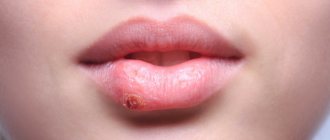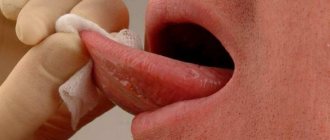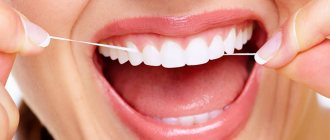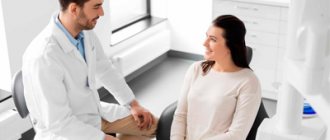06.08.2021
If we talk about the most common reasons for visiting an otolaryngologist, diseases of the throat and larynx are, perhaps, only superior to a runny nose. In most cases, patients struggle with unpleasant symptoms on their own, which often leads to complications and chronic forms of pathologies.
There are many causes of throat and larynx diseases. The lion's share of them are the consequences of the activity of bacteria and viruses, which have similar symptoms to fungal and tumor diseases. There are throat diseases without elevated body temperature; their appearance is provoked by allergens, dry air and substances that irritate the mucous membrane.
Signs and causes
Most diseases of the throat and larynx are infectious in nature. The causative agents are bacteria, viruses and fungi.
The most common bacterial
throat disease - sore throat. Its appearance is caused by streptococci, chlamydia, mycoplasmas, gonococci and tubercle bacilli. Scarlet fever, diphtheria and epiglottitis are also caused by bacteria. All three diseases are manifested by a sore throat, and epiglottitis is generally life-threatening as it can lead to airway obstruction.
Symptoms of bacterial diseases:
- general weakness;
- swelling of the larynx, tonsils;
- high body temperature;
- pain and discomfort in the throat.
For viral
diseases, a sore throat can be one of the symptoms of an illness, for example, ARVI, influenza or measles. Infectious mononucleosis caused by the Epstein-Barr virus (herpes type IV) stands apart. Its development is dangerous due to the rapid spread of inflammation to the spleen and liver, which in turn leads to enlargement of the lymph nodes.
Viral diseases are similar in symptoms:
- heat;
- prostration;
- headache;
- general weakness;
- runny nose;
- cough;
- rash;
- pain and sore throat.
Fungal diseases
genesis - a consequence of the active activity of yeast-like fungi, which looks like a cheesy mass on the mucous membrane during tonsillitis or pharyngitis. Symptoms of a fungal infection of the throat:
- severe sore throat;
- the temperature remains normal.
Fungi quickly multiply in the body during disorders of the gastrointestinal tract, against the background of vitamin deficiency, abuse of antibiotics and hormonal drugs.
A special place as a cause of pain in the throat and larynx is occupied by tumors. It can be primary, that is, formed for the first time, or it can be secondary, the result of metastasis of oncological processes in other parts and organs of the body. The larger the tumor, the more discomfort it brings: the voice changes, becoming hoarse, a feeling of a lump appears in the throat, and it becomes difficult to swallow.
Sinusitis.
Symptoms How to distinguish it from a simple runny nose? Why is it dangerous? What will happen if left untreated? How to treat? Prevention. Causes of occurrence.
Sinusitis is an inflammation of the mucous membrane of the maxillary sinus, which communicates with the nasal cavity. Sinusitis can be acute or chronic.
Acute sinusitis most often develops as a complication of acute rhinitis (runny nose), after infectious diseases, and also as a result of inflammatory diseases of the teeth (odontogenic sinusitis). Hypothermia may be a provoking factor due to a decrease in the body's defenses. Sinusitis differs from rhinitis (runny nose): the duration of the disease - a runny nose lasts 6-8 days, and sinusitis - up to 1 month, the presence of purulent discharge, pain in the area of the affected sinus.
Chronic sinusitis is usually a consequence of the transition of acute inflammation to a chronic form. This can be facilitated by thickening of the nasal mucosa, thickening of the nasal turbinates, curvature of the nasal septum, closing or narrowing of the outlet of the maxillary sinuses, and insufficient treatment of acute sinusitis.
Acute sinusitis is characterized by symptoms of general intoxication: chills, increased body temperature, poor general health, headache of varying intensity. In addition to general symptoms, local symptoms are observed: pain in the cheek area. The nature of the pain is intense and constant, accompanied by a feeling of fullness, intensified by tilting the head, coughing and sneezing. Photophobia and lacrimation are sometimes observed. The nose is stuffy, there is copious mucous discharge (catarrhal sinusitis), mucopurulent, purulent discharge (purulent sinusitis). On the side of the affected sinus, the sense of smell may be reduced. When the periosteum is involved in the process, swelling of the cheek and swelling of the lower eyelid are noted.
Chronic sinusitis is characterized by general weakness, malaise, fatigue, headache (usually in the evening), nasal congestion, and discharge. The sense of smell may be reduced. Vasomotor and allergic sinusitis is characterized by an undulating course with periodic remissions. The clinical picture of exacerbation is characterized by the same symptoms as in acute sinusitis.
Treatment is prescribed by an otolaryngologist. As a rule, treatment is carried out on an outpatient basis and consists of a course of pharmacotherapy: antibiotics, vasoconstrictor drugs, and decongestants are prescribed. At the final stage, the doctor may prescribe physiotherapeutic procedures.
In case of odontogenic sinusitis, treatment by a dentist is also required.
In severe cases and the presence of complications, hospitalization is indicated.
Treatment of sinusitis is mandatory, because this disease can cause serious intracranial, intraorbital and bronchopulmonary complications: swelling of the meninges, meningitis, swelling of the tissue of the orbits and eyelids, bronchitis, pneumonia and other complications.
Treatment of diseases of the throat and larynx
For any form of the disease, frequent and abundant drinking and rinsing is recommended; this allows you to “wash away” the waste products of viruses and bacteria, relieve inflammation and maintain the mucous membrane in the desired shape (it tends to dry out due to high body temperature during illness).
Most cases respond well to drug treatment if it is started on time. Surgical intervention is sought when purulent or tumor processes begin, that is, the disease takes on a severe form, threatening the patient’s life with suffocation.
What and how to treat:
- ARVI is the most common throat disease. It is characterized by dry throat, sore throat, runny nose, sneezing and coughing. The temperature usually stays between 37–38 degrees. Treated with antiviral drugs based on existing symptoms. Gargling with infusions of chamomile, sage and herbal lozenges helps with sore throat; they relieve irritation and make the treatment pleasantly tasty. Along with this, it is recommended to take vitamin C to support and strengthen the immune system, as well as plenty of warm drinks (herbal teas with honey are welcome);
- tonsillitis is an infectious-allergic disease that mainly affects the tonsils. It is characterized by high body temperature, up to 40 degrees, and unbearable pain in the throat. The larynx and tonsils are red - a sure sign of an inflammatory process - and have a white coating. High fever is accompanied by aching joints and headache. Treatment is prescribed by a doctor, since it is important to prevent complications. Drinking plenty of fluids, gargling with antiseptic herbs, and herbal lozenges help with a sore throat. Food should be taken pureed and liquid, not hot, so as not to injure damaged areas of the mucous membrane;
- pharyngitis is an acute inflammatory process in the pharynx, with a characteristic dry cough, soreness, stabbing pain, a feeling of a lump and inflammation in the mucous membrane, developing into purulent processes. During illness, all solid, spicy, sour and hot foods are excluded from the patient’s diet. Treatment is medicinal, the doctor prescribes antiseptics, since the disease is inflammatory in nature. Self-medication in this case is strictly prohibited: the disease develops quickly and becomes chronic;
- laryngitis - inflammation of the vocal cords and larynx is characterized by a barking cough with sputum, a hoarse voice until its complete disappearance, and a scratching pain in the throat. Children often suffer from laryngitis. Laryngitis causes swelling of the throat when lying down, which can lead to suffocation. Therefore, if you find that your child begins to choke while lying in bed, call an ambulance, lift the child to an upright position and take him to the bathroom, under a warm shower, to relieve the spasm. Laryngitis is treated with inhalations, warm compresses, warm drinks and silence. To alleviate the patient's condition, high humidity is needed in the room: a container of water, a diffuser or a wet towel on a radiator;
- Tonsillitis is an inflammation of the tonsils, which is characterized by high body temperature, acute sore throat, and bad breath due to purulent plaque on the tonsils. The main causes of tonsillitis are viruses and bacteria. The course of treatment includes gargling with a solution of soda and salt - it acts as an antiseptic and “washes away” the pus.
Bacterial throat diseases develop very quickly, within a few hours. Viral ones - a little slower. But only a doctor can determine the real etiology of the disease, and then only based on test results.
Symptoms of throat diseases
Most throat diseases have pronounced symptoms. Moreover, the clinical picture for each disease is individual. Among the common and most basic symptoms it is worth highlighting:
- sore throat that gets worse when swallowing;
- sore throat, dry throat;
- cough;
- hoarseness of voice;
- temperature increase;
- enlargement of the submandibular and cervical lymph nodes;
- weakness and general malaise;
- headache;
- bad breath.
The combination of several of these symptoms at once is a reason to immediately consult a doctor. If symptoms increase and health deteriorates, prompt medical care is necessary.
Some throat diseases can cause rapid swelling of the larynx. As a result, without medical assistance, the patient can quickly die from suffocation. If you experience pain, immediately make an appointment with a doctor. This will help quickly and effectively eliminate the disease.
Prevention
It is impossible to ensure that your throat never hurts, especially in the autumn-winter period. But prevention can be carried out regularly to reduce the risk of illness and strengthen the immune system. For this:
- stop smoking if you smoke - nicotine irritates and dries out the mucous membrane of the nose and throat, making them vulnerable to pathogens;
- eat a varied and nutritious diet so that the body receives vitamins and minerals in full;
- humidify the indoor air - artificial indoor fountains, aquariums, diffusers, and water containers are suitable for this. Too dry air is a strong irritant to the throat and contributes to the appearance of microtraumas on the mucous membrane;
- wash your hands more often - pathogenic bacteria, as a rule, enter our body from dirty hands;
- take vitamins - they support the immune system;
- dress according to the weather - during hypothermia, blood vessels narrow, which destroys the protective mechanism of the mucous membrane and the person catches a cold. The cold itself does not contribute to this;
- do not self-medicate - there is a high risk of complications, for example, in the form of hearing loss or disease of the ears, lungs, eyes or brain.
If you feel unwell, consult a doctor. You can make an appointment with a multidisciplinary medical otolaryngologist using the feedback form or by calling.
The main causes of inflammation of the throat mucosa
Before treating a sore throat, an otolaryngologist determines the nature of the inflammatory process.
All causes of sore throat can be divided into two groups: infectious causes and non-infectious ones.
In medical practice, we often have to deal with infectious diseases. In this case, the inflammatory process is associated with the activation of pathogenic microorganisms that settle on the mucous membrane of the larynx. Such pathogenic pathogens include staphylococci, streptococci, fungi, herpes viruses, adenoviruses, etc.
The main methods of penetration of pathogenic microflora into the larynx are airborne droplets and household contact. In the first method, infection occurs when communicating with a sick person (during a conversation, sneezing, etc.). In the second method, infection occurs when a sick person shares the same household items (for example, the same dishes or towel).
It is also impossible not to take into account the protective properties of the body. Bacteria and fungi are present on the mucous membranes of every person, but symptoms of the disease are more likely to appear in a person with reduced immunity.
What to do with a fever with a sore throat
Fever itself is a protective reaction of the body1,2. It triggers a whole chain of immune reactions aimed at fighting infection1,2. As a result, microorganisms lose some of their pathogenic properties, stop multiplying and die.
It is necessary to lower the temperature only in special cases. According to WHO recommendations, antipyretic therapy is indicated for people without chronic diseases only when the temperature rises to 390C1,2. In case of poor tolerance to heat, for example, headache and body aches, as well as severe concomitant diseases of the nervous, respiratory and cardiovascular systems, it is recommended to take an antipyretic drug without waiting for the temperature to rise to 380C2.
The temperature of 380C must be brought down for babies (up to 3 months of life) and children prone to seizures and with severe concomitant diseases2.
Attention! If you have a high temperature, you should definitely call a doctor at home. Only he can evaluate all the symptoms of the disease, make a diagnosis and prescribe the correct treatment.
How many days does a fever last for a sore throat? This largely depends on how quickly the tonsils are cleared of infection and inflammatory products3. To quickly cleanse the tonsils, doctors recommend local procedures, for example, gargling with solutions and dissolving tablets with antiseptics3.
For local treatment of acute tonsillitis, drugs from the HEXORAL® line are intended, which have antiseptic and anti-inflammatory effects4,5,6,7,8. Cleansing the tonsils, reducing and eliminating inflammation helps normalize the temperature3.
To gargle, you can use HEXORAL®4 solution. It is approved for use not only in adults, but also in children starting from the age of three. HEXORAL® aerosol5 is suitable for irrigating the throat.
Traditional treatment of tonsillitis can also be supplemented with lozenges HEXORAL® TABS6, HEXORAL® CLASSIC7 and HEXORAL® TABS EXTRA8. HEXORAL® TABS EXTRA and HEXORAL® TABS6, in addition to the antiseptic, contain the analgesic lidocaine, which will help fight severe sore throat8.
Sometimes local therapy is not enough to control the infection. Then the doctor prescribes general treatment, which may include antibiotics, antihistamines, anti-inflammatory and other drugs. Strict adherence to the recommendations allows you to successfully cope with acute tonsillitis and prevent the development of complications.
The information in this article is for reference only and does not replace professional advice from a doctor. To make a diagnosis and prescribe treatment, consult a qualified specialist.
Literature
- Delyagin V. M. Fever (new touches on an ancient picture) // Pediatrics. Consilium Medicum. - 2022. - No. 2. — pp. 89-93
- Belan Yu. B., Starikovich M. V. Fever in pediatric practice // Attending physician. - 2022. - No. 1. — P. 40-43.
- Krasnova E.I., Khokhlova N.I., Provorova V.P., Evstropov A.N. Differential diagnosis and therapeutic tactics for acute tonsillitis (tonsillitis) at the present stage // Attending physician. - 2022. - No. 11. - P. 58-63.
- Instructions for use of the drug HEXORAL® solution.
- Instructions for use of the drug HEXORAL® aerosol.
- Instructions for use of the drug HEXORAL®TABS.
- Instructions for use of the drug HEXORAL®CLASSIC.
- Instructions for use of the drug HEXORAL®TABS EXTRA.
Up to contents
come back
The reasons for visiting primary care doctors are varied, but there are clear leaders among complaints in different countries of the world. C. Finley et al. in 2022, analyzed more than 83,000 visits to doctors and identified five main complaints with which patients come to see [1]. In first place is a cough, in fourth place is a sore throat.
A sore throat can be caused by a variety of factors. These are also non-infectious agents: temperature changes, eating cold or very hot food and drinks, hypothermia, smoking, overstrain of the vocal apparatus, especially systematically.
Irritation of the mucous membrane of the oropharynx and palatine tonsils contributes to the development of inflammation, which allows viruses, bacteria and fungi to actively develop.
According to the World Health Organization, upper respiratory tract infections (URTIs) affect about 44% of the population every year [2]. In every fourth patient, the disease recurs and/or becomes chronic. In turn, inflammatory diseases of the pharynx account for up to 30% of the pathology of the upper respiratory tract [3].
Acute pharyngitis, as a rule, is one of the symptoms of acute respiratory viral infection (ARVI). Patients complain of a sore throat when swallowing saliva, the so-called “empty” swallow, a sore feeling, and rawness in the throat. These complaints usually appear against the background of hypothermia and are combined with other manifestations of ARVI - weakness, headache, cough, low-grade fever, rhinorrhea [4].
There are many factors that contribute to the frequent occurrence of acute pharyngitis. These include a decrease in local immunity, allergization of the body, metabolic disorders, the presence of concomitant chronic diseases, unfavorable working and living conditions, insufficient and unbalanced nutrition and much more. The surface of the pharyngeal mucosa, regularly exposed to microorganisms, represents one of the main routes for their penetration into the human body. Under normal conditions, pathogenic microorganisms are retained in the upper respiratory tract, while the lower ones remain sterile due to effectively working protective mechanisms (mucociliary and immune). As a result of the failure of these protective mechanisms, an inflammatory process develops. Most often, typical “respiratory” bacteria are found in foci of inflammation - pneumococcus, Haemophilus influenzae, moraxella, streptococci and, to a lesser extent, staphylococci. In the presence of chronic bacterial infections, the likelihood of developing a bacterial complication during ARVI increases significantly [5].
When the bacterial phase of the disease occurs, many patients are not prescribed systemic antibacterial drugs. The exception is infections caused by group A beta-hemolytic streptococcus. In most other cases, local antibiotic therapy is effective.
Bacterial inflammation, according to the recommendations of the Infectious Diseases Society of America, can be suspected if clinical signs persist for more than 10 days, symptoms intensify on the 3rd day, or after a short-term improvement, with a new peak of symptoms. All this suggests that there is no clear temporal distinction between the viral and bacterial phases [6].
Currently, the attention of clinicians is attracted to complex topical preparations. The absence of systemic effects and adverse events, on the one hand, and the ability to actively influence various parts of the pathological process at the level of the mucous membrane, on the other hand, contribute to the widespread use of these drugs.
One of these drugs is the drug "Doritricin", containing tyrothricin - a broad-spectrum antibiotic, benzalkonium chloride - an antiseptic and benzocaine - a local anesthetic.
Tyrothricin is a unique antibiotic that belongs to a subgroup of polypeptides synthesized by the bacteria Bacillus brevis; it is a mixture of cyclic and linear (aliphatic) polypeptides that have an antibacterial effect. The composition includes up to 70-80% tyrocidin - an alkaline cyclic decapeptide and 20-30% gramicidin - a neutral linear pentadecapeptide. The combination of these polypeptides, due to different mechanisms of action, allows tyrothricin to exhibit a wide spectrum of antibacterial activity, equivalent to the action of penicillin [7].
Tyrocidin has a high penetrating ability into the mucous membrane upon contact with it, exhibiting 2 mechanisms of action: suppression of protein synthesis in ribosomes and disruption of osmotic processes in the microbial cell membrane. Due to the first mechanism, the bacteriostatic effect of the drug is realized, and due to the second, the bactericidal effect is realized. Thus, pathogenic microorganisms must change their membrane composition and organization to achieve resistance, a very labor-intensive process that is further complicated by bacteriostatic effects that prevent bacteria from quickly adapting and defending themselves. Accordingly, the likelihood of developing resistance to this antibacterial drug is very low, which was proven by M. Stauss-Grabo et al. in 2014 by demonstrating the constant susceptibility of microorganisms to tyrothricin [8].
The mechanism of action of gramicidin is predominantly bactericidal and, like tyrocidin, is associated with disruption of the organization of lipoprotein systems and cell permeability created by the membrane. In addition, the listed mechanisms of action of tyrocidin and gramicidin prevent the formation of bacterial spores.
Many modern antimicrobial dosage forms for local use in the oral cavity and pharynx contain not only an antibiotic, but also an antiseptic. What is the advantage of this combination? First of all, the difference between an antibiotic and an antiseptic. The antiseptic acts superficially, preventing excessive bacterial colonization of the organ affected by the inflammatory process, and the target of its action is often not only bacteria, but also viruses, protozoa and other microorganisms. In turn, an antibiotic is able to penetrate inside a bacterial cell and cause more fatal disturbances in it, including death, but its spectrum of activity is more limited compared to an antiseptic and includes mainly bacterial flora. The combination of antibiotic + antiseptic is more attractive due to its complementary effect, enhancing the anti-inflammatory effect and reducing the dose of each of the drugs included in its composition to achieve a therapeutic effect.
The antiseptic in the drug "Doritricin" is benzalkonium chloride, which is an antiseptic drug that acts on gram-positive, gram-negative aerobes and anaerobic bacteria, and also has antifungal and antiprotozoal effects and an antiviral effect (herpes simplex virus). In vitro studies prove that, due to the triple combination, the drug Dorithricin also has a synergistic antiviral effect against the main respiratory viruses: HRV14, H1N1, RSV [9].
An important property of benzalkonium chloride is its ability to exhibit pronounced adhesion to the mucous membrane, due to which its effect continues even after the tablet is dissolved. This advantage, combined with the speed of onset of the effect (10 minutes), makes it possible to achieve a longer (within 3 hours) antiseptic effect compared to simple gargling.
It is also important that Dorithricin contains an anesthetic, benzocaine, which is an ester of ethyl alcohol that exhibits local anesthetic activity. The implementation of this effect is based on reducing the permeability of the cell membrane to Na+ ions, displacing Ca2+ from receptors located on the inner surface of the membrane, resulting in blocking the occurrence and conduction of nerve impulses. Bezonzocaine is practically insoluble in water, so its main advantage over other local anesthetics is its minimal absorption. This property allows us to minimize the risk of allergic reactions associated with the drug entering the systemic bloodstream. Upon contact with mucous membranes, the local anesthetic effect begins after 1 minute and lasts 20 minutes.
The treatment regimen with Dorithricin involves taking 1 lozenge behind the cheek every 3 hours. The maximum duration of treatment is 7 days. The drug can be prescribed to children from 6 years of age.
The use of the drug "Doritricin" has been confirmed in a number of clinical studies and is recommended for various infectious and inflammatory diseases in the oral cavity and pharynx. In particular, Scholten et al. (2005) showed its significant superiority over placebo in relieving inflammatory symptoms in patients with pharyngitis after 7 days of treatment. During the study, no adverse events or allergic reactions to the drug were recorded.
According to another placebo-controlled study, Eberhardt et al. (2004), which included 118 patients aged 18 to 70 years with a diagnosis of pharyngitis, 75% of those taking Dorithricin had pain in the throat relieved after 3 days of treatment, which was significant compared with placebo. The use of Dorithricin was well tolerated [10].
An observational study was conducted at our department. The observational study included 30 patients aged 18 to 65 years with a diagnosis of acute tonsillitis and/or acute pharyngitis. All patients underwent streptotest. Inclusion in the study was possible only after a negative result.
To assess their well-being, patients filled out daily visual analogue scales (VAS): assessment of sore throat at rest and when swallowing from 0 points - no pain to 9 points - very severe pain; discomfort rating from 0 points - no discomfort to 9 points - very severe discomfort; assessment of general health from 0 points - satisfactory to 9 points - very bad.
Rice. 1. Visual analogue scale: subjective assessment of sore throat.
Rice. 2. Visual analogue scale: subjective assessment of throat discomfort.
Rice. 3. Visual analogue scale: subjective assessment of the general well-being of patients.
By the third visit, all patients (100%) had no complaints, VAS score was 0.
During an objective examination of the patient, the doctor also noted the presence of changes according to the scoring system: hyperemia and swelling of the mucous membrane of the posterior pharyngeal wall, enlargement and tenderness of the cervical lymph nodes were assessed from 0 points - no sign to 9 points - a very pronounced manifestation.
Rice. 4. Objective assessment of inflammatory changes.
At the first visit, all (100%) patients showed hyperemia of the mucous membrane of the posterior pharyngeal wall ranging from 6 to 9 points; in 23 (77%) - swelling of the mucous membrane of the posterior pharyngeal wall from 5 to 8 points; 18 (60%) had enlarged/painful lymph nodes on the anterior surface of the neck from 4 to 7 points.
On the second visit, the condition improved in all patients, however, in 7 (23%) patients there was hyperemia/injection of the vessels of the posterior pharyngeal wall, which we assessed at 3-8 points; in 4 patients (13%) swelling of the mucous membrane of the posterior pharyngeal wall remained from 2 to 4 points (insignificant); 11 (37%) patients had an increase in painless lymph nodes from 3 to 5 points.
At the third visit, no patient (0%) had objective symptoms of inflammation.
At visit 2 (3rd day of treatment), after assessing the patient’s subjective and objective condition, we made a decision either to terminate therapy early or to continue it.
Thus, at visit 2, 22 (73%) patients were considered clinically cured and further therapy was discontinued. In 5 (17%) patients, we noted an improvement, but complaints persisted on a VAS scale of 4 to 5 points, reactive phenomena in the pharynx remained on a VAS scale from 3 to 6 points (minor), treatment was continued until the 6th day. Based on the results of a cumulative assessment of objective and subjective manifestations of the disease on VAS scales from 5 to 8 points, 3 (10%) patients were prescribed antibacterial therapy.
Rice. 5. The need to continue therapy after visit 2 (day 3).
During the follow-up examination, the patients had no complaints; inflammation in the oropharynx was relieved. All patients recovered.
Based on the results of the study, we can conclude that the use of the drug "Doritricin" in the treatment of patients with acute pharyngitis and/or acute tonsillitis has a pronounced clinical effect already by the third day from the start of treatment. Also, Dorithricin monotherapy allows reducing the use of additional medications and improves the quality of life of patients from the first days from the start of treatment. This drug has a high safety profile. No side effects were found during the study. Tolerability of the drug "Doritricin" was rated by patients as very good or good.
The authors declare no conflict of interest.
The authors declare no conflict of interest.
How to get rid of a sore throat?
Non-drug methods.
Before you get rid of a sore throat, you need to find out the exact reasons that caused it. In situations where the diagnosis of a cold is beyond doubt (there are other typical symptoms), and the infection itself is relatively mild, you can limit yourself to non-drug therapy and the use of safe medications, preferably natural remedies.
Even a slight sore throat should not be left unattended - if left untreated, the disease can “go downhill” involving the lower respiratory tract in the inflammatory process or become chronic, intractable. For non-drug treatment of sore throat, the following is also used:
- warm drink. It is recommended to take warm (not hot or cold!) liquid, with a temperature of about 40°C. For non-allergic inflammation, irritation of the laryngeal mucosa can be prescribed with herbal decoctions, tea with honey, milk with a small amount of butter and soda (on the tip of a knife). If you are prone to allergies, it is preferable to use heated mineral water, tea, or plain boiled water. The liquid should be drunk in small sips, holding it in the mouth for some time, as often as possible;
- rinsing with warm alkaline solutions, decoctions of anti-inflammatory herbs;
- warming, distracting and physiotherapy (foot baths, inhalations, FUF, etc.).
Medication methods. In cases where it is not possible to get rid of a sore throat for a long time (a week or more) or if other alarming symptoms are noted (high temperature, severe weakness, severe cough), it is recommended to consult a doctor and, after prescribing, use medications:
- products for topical use - lozenges and lozenges, throat sprays, antiseptic solutions for rinsing;
- agents for systemic use – anti-inflammatory, antiviral, antimicrobial, etc.











